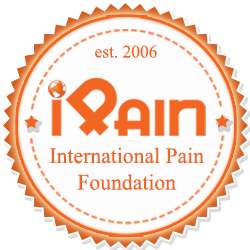Working Out with Chronic Back Pain: The Best and Worst Exercises For You
Chronic back pain usually occurs in the lumbar region, and lasts more than 12 weeks. It’s more common than one might realize, as Statista reports that around 39% of U.S. adults in 2019 experienced chronic back pain, and the pain lasted on average for three months. Having chronic back pain can significantly lower your quality of life — you might have trouble moving and completing daily tasks, such as walking and working.
Fortunately, there are simple solutions to help manage the pain, such as regular exercise. This may be the last thing you want to do when you’re in pain, but Dr. Brent Wells suggests that being physically active strengthens muscles that support your spine. Warming up and cooling down is also a must as it prepares your muscles before a workout and relaxes them after. However, exercising with back pain can either make it better or worse. So to help ensure that your workouts aren’t doing more harm than good, here are some exercises to do, and some to steer clear of as well:
Dos:
The right exercises involve not putting pressure on the spine. They should also help strengthen your back and core muscles.
Yoga
Yoga is a safe form of exercise. It’s mostly known for relieving stress and tension, but it has a lot of physical benefits as well. SymptomFind, a respected health and wellness site, has articles on the benefits of different activities like yoga. They explain that different yoga poses, such as the Child’s Pose and Sphinx Pose, can build muscles in key areas, such as the abdomen and back. As your muscles strengthen, they’re more able to support your spine. Additionally, yoga can improve your mindfulness in terms of your posture, and further alleviate any back pain.
Stationary cycling
Biking on the road can sometimes be jarring to the spine, especially if the road isn’t smooth. But an indoor bike can provide a good aerobic workout that’s also gentle on the spine. Cycling strengthens the leg and thigh muscles, which can also improve back support, as the lower body does support the upper body. As an aerobic exercise, cycling also improves cardiovascular health and circulation. With this, oxygen and other nutrients will get to the desired muscles much quicker, which can help strained areas and other soft tissue problems in the back heal faster.
Swimming
Swimming is a low-impact aerobic exercise. A post on Insider states that being in the water can reduce your body weight by 90%, making any activity in the water less weight-bearing. This means people with chronic back pain can take advantage of the freedom that comes with being able to move more in the water. Pool exercises like walking, back wall glides, and high-knee lift extensions can strengthen your core and leg muscles.
Don’ts:
There are actually exercises that can strain the back too much. While some might work, they should be done properly (or with professional help) or they may do more harm than good.
Weightlifting
Weightlifting, whether it is heavy overhead lifting or deadlifting, requires perfect form. However, having chronic back pain affects your posture, and doing any heavy lifting will only make it worse. Men’s Journal notes that common mistakes in lifting are letting the lower back dip or rounding upper back. These extremes only contribute to aggravating persistent back pain that you may already have. If done incorrectly, weightlifting puts too much compression on the vertebrae of the spine. It can even cause vertebrae fractures if you push yourself too hard or perform movements with poor technique.
Running
Running, especially on a hard surface, can cause repetitive stress that may be damaging to the back. It’s hard to learn proper form when you already have back pain, and poor form can transfer the shock to your hips and put more stress on it. Experts advise that you should probably avoid running if your chronic back pain is structural — meaning, if the spine has an abnormalities, any repetitive stress can only worsen soft tissue pain.
HIIT
High-intensity interval training (HIIT) is composed of a series of workouts that can be finished in 30 minutes or less. But similar to running, the high-impact nature of HIIT can only make chronic back pain more unbearable.
If your chronic back pain is becoming debilitating or you’re worried it may be a symptom of something else, consult with your doctor. For more information and help on chronic pain, check our blog on the International Pain Foundation.

